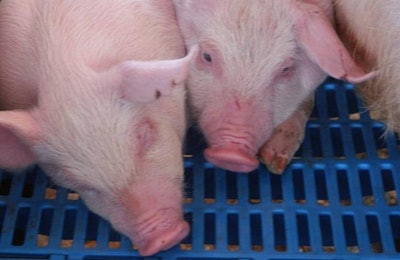
African swine fever (ASF) is far more virulent than Chinese officials have let on, and may well be capable of evading control even in the U.S., according to a top commodities economist at INTL FCStone Inc.
Based on daily reports from animal feed distributors and manufacturers in China, Arlan Suderman, chief commodities economist for INTL FCStone, said he is skeptical that China will be able to control the disease. Despite increased vigilance by U.S. customs, he said he and others fear it’s only a matter of time before the U.S. has its own outbreak of the disease.
“This is a legitimate risk for the U.S. hog industry,” he said. “A lot of people in the industry no longer talk about if it gets to the U.S., but how long we can keep it out.”
Suderman’s feed industry sources in China have reported to him that hog feeding is down more than 50 percent in the northern reaches of the country, and down about 40 percent nation-wide. Based on their reports, he estimates that China has lost some 16 million metric tons of pork production capacity, and that it could take 5-7 years before the country recovers.
Officially, China has reported 133 ASF outbreaks, with 30 active ASF outbreaks, to the World Organisation for Animal Health (OIE).
Elsewhere, Suderman said, prices have already begun to rise. Wholesale pork prices have increased 47 percent since February, and other industries, including poultry and beef, will soon feel the impact as well.
“There is not enough meat in the world to make up for that deficit,” he said.
The industry’s best chance at controlling the disease, Suderman said, is the development of a vaccine — but that’s expected to take 2-3 years. In the meantime, an outbreak of ASF in the U.S. is feasible. ASF could arrive with an international traveler’s — the virus can live for up to six weeks on clothing—or via imported meet, should it make its way to a feeding facility. The virus could also spread in feed or feed additives, Suderman said.
Should the virus arrive in the U.S., Suderman said he believes American producers will be better able to contain the spread of ASF. And even if it doesn’t cross the ocean, he said, “U.S. consumers will pay part of the price for China’s inability to control this disease.”
View our continuing coverage of the African swine fever outbreak.

















